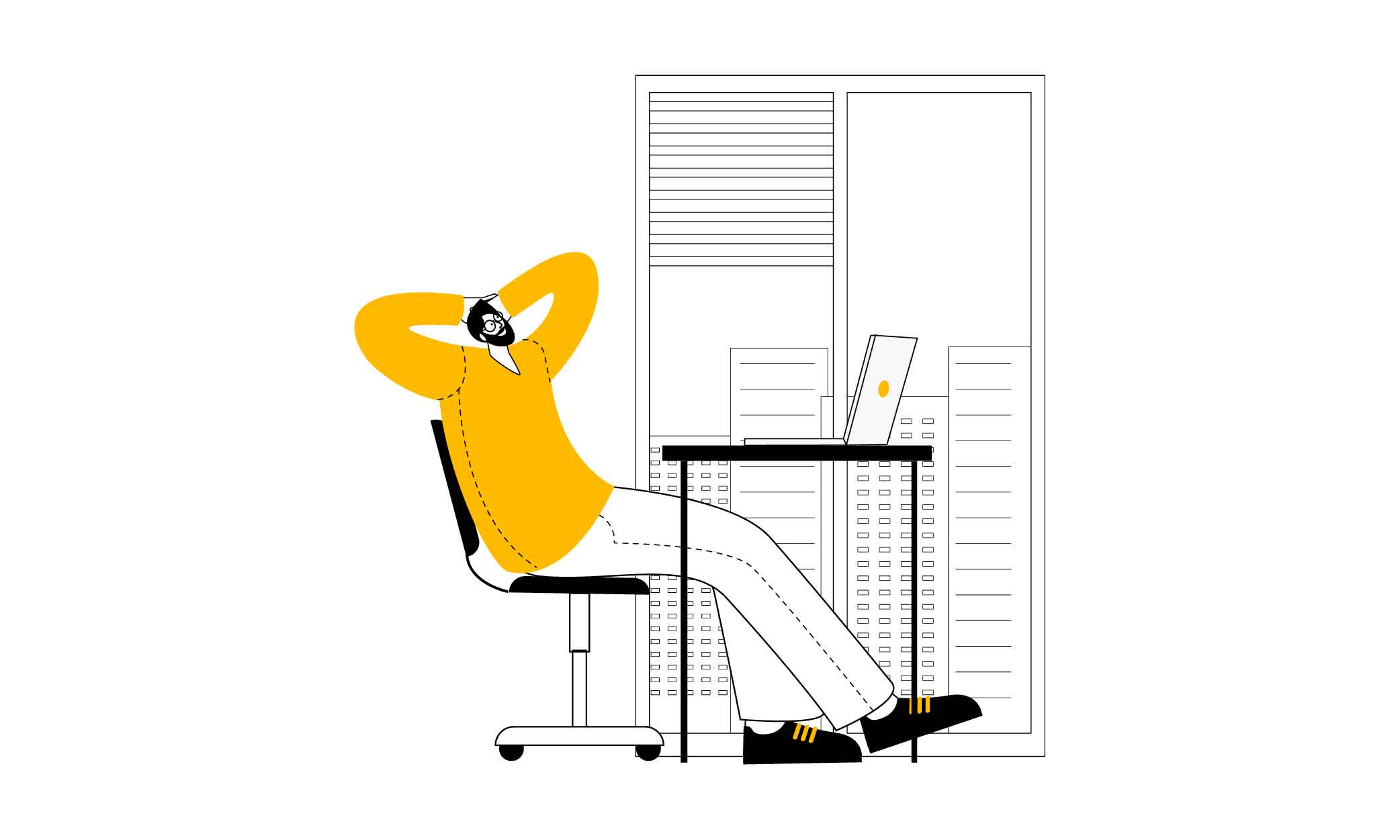Many of us have forgotten what it’s like to share a place with coworkers – and hybrid working has only exacerbated the problems. Here are some return-to-office rules to get around your post-pandemic workplace.
The post-pandemic workplace is almost unrecognizable. For many employers, staff are returning under a hybrid model, working from home a few days a week and coming in for the rest. While the office is still in a state of flux – the most in-demand offices today are the ones that offer an outdoor space, paired with cosy workstations, allowing workers to move seamlessly in what resembles departure lounges. It’s also been a nouveau work experience for employees who are hot-desking for the first time in their careers, without a workstation, succulent, or stationery to call their own.
People have changed as well. Some of us have grown accustomed to wearing basketball shorts, cooking our own lunches, and practicing pilates in the morning while also getting our job done. So, as commuter trains begin to fill up again and the mug cupboard sees its first meaningful use since early 2020, what are these return-to-office rules?
Q. How am I going to survive back-to-back meetings?
You should have fewer meetings. “Most meetings are fruitless,” says Scott Belsky, author of Making Things Happen, “and they are extremely expensive in terms of time and energy.”
When a meeting begins, every team member’s workflow comes to a halt. In fact, all progress comes to a halt.

If you are dragged from your desk, you should suggest certain ground rules to minimize distraction and deviation. Make sure you have a clear end objective and an organized agenda and weigh in if things start to meander. You can get started by eliminating all meetings that lack a concrete agenda and when one can be justified, going around the table at the end and having each participant review their action steps that have been agreed upon.
Q. How can I formally request my boss that I want to continue working flextime?
If you’re one of the thousands of workers trying to figure out how to balance it all, or if you’ve discovered that working flexible hours has been a major win for you and you’d like to continue post-pandemic, it’s time to consider requesting a flexible schedule from your company. Having more choice over when you may work during the day can help you create the necessary space to manage the demands of your career, childcare, and online learning. The good news is that, given all of the ways Covid-19 has changed the world (and continues to do so), the pandemic could be a watershed moment for flexible work. Your manager might be more receptive to your request than they would have been in the past.

In your email, stay focused on specific benefits to the company and why your flextime arrangement would result in improved productivity and make you a better employee. You might also cite statistics about larger corporate savings, which appeal to your manager’s interests and bottom-line concerns rather than focusing on how it will make your life easier. One way to start the conversation is as follows: I’d want to get a fair understanding of my flexible work options. The more I can rearrange my schedule, the more I’ll be able to meet work priorities and be productive at all times.
You could ask for a trial period for your flexible work arrangement. Set the length of the trial period, schedule check-ins with your manager to discuss how things are going, and establish criteria for measuring progress. Reinforce your willingness to be flexible in your schedule or work plan, such as by changing your hours to attend crucial meetings when they arise. Keep track of any improvements in performance during the trial time and be prepared to report back at the end. Along with the positive outcomes, be prepared to address any setbacks and provide solutions to fix or eliminate the problem.
Q. I miss my children. Is it acceptable to Zoom them out of the office?
Before the pandemic, we would have gone to a break room, waited until lunchtime, or gone outside for a few minutes to make a phone call; the same principles should apply to video conversations. The only exception to this rule would be if it was late at night, the office was quiet, you had to work late, and you wanted to say goodnight to the children. However, it should be avoided during normal, hectic business hours.

Q. I am feeling anxious about return-to-office phenomena.
It’s critical to understand whatever aspects of returning to the office make you nervous. If you’re nervous about taking public transportation, for example, in the days leading up to your return-to-work date, I would suggest you rehearse a portion of your commute. Take the subway for a few stops, or walk around the neighborhood around your office building to reacquaint yourself.

The American Psychological Association suggests a few grounding activities you can do at your desk, such as a simple breathing technique. You can also focus on a simple task, such as mentally counting backwards by three, to focus your brain and untangle thoughts.
You may also ask for reasonable accommodations including a more flexible work schedule, time off for medical visits and therapy, and a quieter work environment.
You can also refer to our Return-to-Office checklist here.





